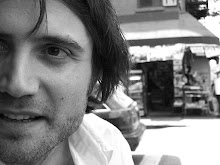One of the great opportunities of the past six months was the chance to teach an improvisation clinic at Hunter College in Manhattan recently. Thanks to Ryan Keberle, a professor at the school and one of the most fantastic trombonists on the planet, I was invited to go there and do a ninety-minute class on improvisation. Never having met or heard the students there, it was very difficult to know where to begin and what level to teach at. Improvisation is a difficult subject to address in any setting and demands that the teacher have a deep understanding of the student's strengths, weaknesses, and background.
One of the things that I emphasize with anybody who I teach is that there is no one path to becoming an improviser. If one was to ask a hundred jazz musicians how they learned to play, one would get a hundred different answers. Most people worth listening to are on a consistently evolving path, one that constantly reexamines itself and revises any stable notions or ideas. Though there are many tangible aspects to the traditional jazz vocabulary, one can arrive at them in so many different ways and everybody has to find what works best for them. In the end, the teacher only teaches one to teach themselves.
Thus, coming in to teach a group of strangers for ninety minutes and leave them with something valuable was a daunting notion. However, the attitudes and hunger for guidance and knowledge that I found there was so warm, humble, and open that my fears and concerns were quickly set aside. The students at Hunter are not people looking to pursue careers as performers. Many are education majors or are studying something completely different and simply taking music classes for the joy of it. There are also several older students in the class who have taken up music as a hobby.
So much of my musical existence is spent around people seeking a career as artists and performers. How refreshing to get out of this world and work with people playing without this immense weight upon their shoulders. I remember reading some essays by Paul Hindemith that talked about so much of the classical music before the mid-20th century being written so amateurs could play it, thus keeping it accessible and blurring the distinction between professional and amateur. As contemporary music became more and more difficult (and the television replaced the piano as the center of many households), the rift between professional and amateur widened, and many lost touch with it as it grew increasingly insular, unaccessible, and unpopular. Hindemith believes that the resurgence of classical music is largely contingent upon this being addressed.
I feel very similarly about where jazz is right now. We have to make the learning process of it accessible to people who take it up later in life. How fortunate we professionals were to immerse ourselves in this elusive process so early in our lives, before our lives became so crunched for time and paralyzed by the adult mind so easily overwhelmed by the massive amount of information that one feels must be absorbed in order to learn this language. The most valuable thing that I thought I could give the students was to encourage them to search for their own paths, never to let themselves become overwhelmed, and most of all, to continue enjoying the process. Of course there were some technical tidbits - leading tones, rhythmic development, etc.- but I tried to always come back to these main ideas. Over the course of the clinic, so many of them opened up to me with their questions and frustrations that forced me to question my own process and practice, which is what teaching should be about and why it's an important activity for every musician to engage in. The amateur musician is one of the most crucial parts of the music community, and I think it is the job of every musician to become involved with them and make sure that there are practitioners of jazz beyond the increasingly insular world of professionals.
Wednesday, June 4, 2008
Subscribe to:
Post Comments (Atom)





No comments:
Post a Comment